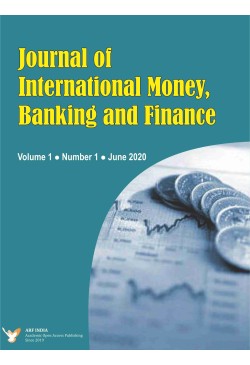
Journal of International Money, Banking and Finance
Frequency :Bi-Annual
ISSN :2582-7650
Peer Reviewed Journal
This paper investigates the intraday dynamic relationship between Chinese CSI 300 spot and futures markets with respects to the lead-lag dynamic relations of prices and the volatility spillovers effects based on 5-minute price data. Multivariate cointegration and causality tests are employed to characterize the lead-lag relationship. Furthermore, volatility spillover is modelled in our exercise by the GARCH-BEKK parameterization technique. No unique lead-lag relation (unidirectional lead-lag relation and bidirectional relation) is found in various periods. The lead-relation is from futures price to spot price during period one, whereas futures price lead to spot more profoundly than the reverse in period two. We also find that volatility spillovers are bidirectional in all the three periods, although they are asymmetric in the first and second periods. Moreover, we find that volatility spills over from cash market to futures market with greater magnitude than the reverse in the first period, while in period two futures market demonstrates greater strength in volatility spillovers. It indicates that stock index futures market tends to play a leading role between spot and futures markets but this relation is not stable.
Key words: Lead-lag relation; Volatility spillover; Multivariate cointegration; Stock index spot and future; GARCH-BEKK; China
The paper seeks to verify the quantity theory of money in UK during 1844-2016 by applying regression model, cointegration and vector error correction model and found that there is unidirectional causality from money to price level and there is one cointegrating equation.Vector Error Correction Model showed long run causality from money supply to price level and the speed of adjustment of error correction was 1.60% per annum which tends to equilibrium insignificantly. The double log regression model revealed that the relation is non proportional and positive and significant. Vector error correction model is stable and nonstationary.
Key words: Quantity theory, causality, cointegration, vector error correction.
JEL Classification: Codes: C22, C32, E41, E52, E61
This study employs a sample of Vietnamese commercial banks from 2008 to 2019 to evaluate whether diversification influences the growth of banks’ gross loans as well as the growth of individual loan categories. Geographic diversification is likely to reduce the amount of money available for loans, however over time it may lead to loan growth via new customer relationships. Deposit diversification is likely to increase total funding available for loans. Our findings show that geographic diversification is statistically significant with the expansion of gross loans, consumer loans and corporate loans. In contrast, the empirical results provide evidence of the impact of deposit diversification on the growth of consumer loans only. In the case of other loans, the results do not reveal any significant diversification impact on growth. To an emerging country with loan domination of the banking system, the strategic implications of our findings could be beneficial for both bank managers and regulators.
Key words: Quantity theory, causality, cointegration, vector error correction
JEL codes: Codes: G21
This note analyses the decision problem of a risk-averse foreign firm regarding the optimum cross-border investment decision under uncertainties stemmed from the exchange rate movements in a mean-variance decision-theoretic model. This framework is based upon the utility from the expected value and the standard deviation of the firms random final profit. This modelling approach allows us to explore how much a risk-averse firm optimally invests abroad when facing uncertainties regarding the exchange rate movements. All comparative static effects are described in terms of the relativetrade offs between risks and returns.
Key words: Foreign investment; Exchange rate risk; Risk aversion elasticity.
JEL codes: D81; F20; G11.
This paper examines whether recently high housing prices in Indian housing market are explained by fundamental factors such as GDP growth, easy credit availability, interest rate and stock market wealth. Using an Auto regressive Distributed Lag (ARDL) bounds test approach for a period of 1997: q2-2011:q1, we estimate a long-run equilibrium model that explains the real economic determinants of house prices and a short-run error correction model to represent house price changes in the short run. We find the existence of long-run equilibrium relationship between the house prices and their fundamentals. It implies that house price bubble if there is any, is not persistent. Instead, there is mean reverting behavior if deviations from co-integrating relationship to occur.
Key words: Housing Prices, Bubble, India, ARDL.
JEL codes: E58, R31